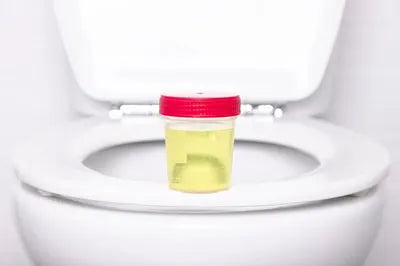Leaks happen. Whether it’s due to heavy bleeding after childbirth or bladder control issues, finding the right kind of protection can be overwhelming. You walk into a store or browse online, only to be met with a sea of options—two of which are maternity pads and incontinence pads. At first glance, they may seem similar as both are designed to offer comfort and protection. However, they cater to different needs. Picking the wrong one could lead to discomfort, inadequate protection, or unnecessary expense. So, how do you know which one is right for you? In this guide, we’ll break down the differences and help you pick the one that truly fits your situation.
What Are Incontinence Pads?
Ever had one of those moments where a sudden sneeze or a good laugh turns into an "uh-oh" situation? That’s exactly what incontinence pads are designed for. Unlike regular pads, these are made to absorb and lock in fast-flowing urine leaks, keeping you dry and comfortable for longer periods. They come in different absorbances, for light dribbles to heavier leaks, and have special materials that control odour and prevent wetness from sitting against your skin. Whether it’s due to ageing, medical conditions, or temporary issues like post-pregnancy bladder weakness, incontinence pads for women offer a discreet and reliable way to stay fresh and worry-free throughout the day. For those needing extra security, Friends Adult Dry Pants provide superior absorption and all-day comfort, making them a great option for managing incontinence effectively.
What are Maternity Pads?
Giving birth is a beautiful yet intense experience, and your body needs time to recover afterward. That’s where maternity pads come in. Designed specifically for postpartum bleeding (lochia), these pads are much thicker, softer, and more absorbent than regular sanitary pads. In the first few days after delivery, the flow can be heavy, and maternity pads ensure you stay comfortable without needing constant changes. They’re also gentle on sensitive skin, making them ideal for mothers healing from stitches or C-sections. Whether you’re in the hospital or settling in at home, maternity pads provide the protection and comfort new moms need during this crucial recovery phase.
Key Differences Between Incontinence Pads and Maternity Pads
At first glance, maternity pads and incontinence pads for women might seem similar—they both help manage bodily fluids. But look closer, and you'll find that they serve very different purposes, each designed with specific needs in mind.
Purpose and Absorbency
-
Incontinence Pads:
Built to tackle sudden urine leaks, these pads use superabsorbent polymers (SAP) to lock in moisture instantly, keeping you dry and odour-free. Similar to adult diapers for women, they’re designed for quick absorption and all-day confidence.
-
Maternity Pads:
After childbirth, postpartum bleeding (lochia) can last for several weeks, requiring gentle protection. Friends Maternity Pads are designed to handle this phase with superior absorbency, keeping new moms comfortable and dry. These pads help manage heavy flow, blood clots, and sudden gushes, providing security during recovery. Their soft, breathable materials ensure rash-free comfort, while the leak-proof design offers peace of mind whether you're resting or on the move.
Design and Comfort
-
Incontinence Pads:
Slim, contoured, and discreet, incontinence pads for women fit snugly to prevent leaks. Many come with odour control and adhesive strips to keep them securely in place, allowing you to move freely.
-
Maternity Pads:
Friends Maternity Pads are designed for maximum comfort, especially for moms recovering from stitches or sensitive skin. Available in Sticker-Type (with an adhesive backing for secure placement in underwear) and Loop-Style (with elastic loops for a flexible, adjustable fit), they provide soft cushioning, superior absorbency, and leak-proof protection to keep new moms dry and irritation-free during postpartum recovery. Luckily, Friends Maternity Pads are available in both styles.
Duration of Use
-
Incontinence Pads:
Designed for long-term use, these pads come in different absorbency levels to suit varying degrees of bladder leakage.
-
Maternity Pads:
Used temporarily, typically for about six to eight weeks post-delivery, until postpartum bleeding subsides and the body returns to its normal menstrual cycle.
Material Composition
-
Incontinence Pads:
Like women’s diapers, these are made with fast-absorbing materials that wick away urine and turn it into gel, preventing dampness and keeping the skin dry.
-
Maternity Pads:
These are crafted from soft, cushiony materials to handle postpartum bleeding while being gentle on the skin. They can also accommodate small blood clots, a common occurrence after delivery.
By understanding these key differences, you can choose the right product for your needs—whether it’s postpartum recovery or managing bladder control—ensuring comfort, protection, and peace of mind.
When to Use What?
Choosing between incontinence pads and maternity pads depends on your specific situation and needs. Here's a guide to help you determine which is appropriate for you:
When to Use Incontinence Pads?
-
Bladder Control Issues:
If you're experiencing urinary incontinence—whether due to age, medical conditions, or temporary factors—incontinence pads are designed to rapidly absorb urine leaks, keeping you dry and comfortable.
-
Long-Term Management:
For ongoing bladder leakage, incontinence pads offer various absorbency levels to suit different severities, providing discreet protection during daily activities.
When to Use Maternity Pads?
-
Postpartum Bleeding:
After childbirth, it's normal to experience lochia, a heavy discharge of blood and uterine tissue. Maternity pads are specifically designed to handle this postpartum bleeding, offering the necessary absorbency and softness to ensure comfort during recovery.
-
Post-cesarean Section:
Even after a C-section, postpartum bleeding occurs. Maternity pads provide the required absorbency and coverage, lasting up to 6-8 hours, making them suitable for managing this period.
Choosing the right pad isn’t just about absorbency—it’s about comfort, confidence, and making sure you feel your best, no matter the situation. If you're managing bladder leaks, incontinence pads are your go-to for staying dry and odour-free throughout the day. On the other hand, if you’re recovering from childbirth, maternity pads provide the extra cushioning and absorbency needed during postpartum bleeding. At the end of the day, it’s all about understanding your body’s needs and picking what works best for you. Whether it’s for long-term protection or temporary recovery, the right pad can make all the difference in helping you feel secure and comfortable.
Product Recommendations
FAQs
How long should I use maternity pads after delivery?
You should use maternity pads for about six to eight weeks post-delivery, depending on your flow. Initially, bleeding is heavy, so thicker pads are recommended. As the flow reduces, you can switch to lighter absorbency pads or regular sanitary pads.
Are incontinence pads safe for sensitive skin?
Yes, most incontinence pads are designed with skin-friendly materials, featuring breathable layers and moisture-wicking technology to prevent irritation. If you have extremely sensitive skin, look for hypoallergenic or dermatologically tested options to minimize discomfort.
Can I use maternity pads for incontinence?
While you can, maternity pads are not ideal for incontinence as they are designed for postpartum bleeding, not fast-flowing urine. Incontinence pads have superior absorbency and odor control, making them a better choice for managing bladder leaks effectively.
Can incontinence pads be used at night?
Yes, incontinence pads come in high-absorbency variants specifically designed for nighttime use. These pads provide extra coverage and leak protection, ensuring comfort and dryness while you sleep. Look for overnight incontinence pads for maximum security.
Do incontinence pads feel bulkier than maternity pads?
Not necessarily. While maternity pads are thicker to handle postpartum bleeding, incontinence pads are designed to be slim yet highly absorbent. Many incontinence pads have a contoured fit, making them discreet and comfortable for daily wear.





















